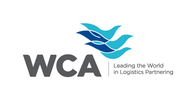

C21u—Introduction to U.S. Importing: The Customs Release and Entry Process
Subscriber price: $179.00, Non-subscriber price: $263.00
Estimated total study time: 14 hours 16 minutes
![]()
This course is designed for an entry-level person to gain basic understanding of the process of importing goods into the United States, including U.S. Customs and Border Protection and the various government agencies involved in the import process.
If you are a new importer, this course will create understanding of an importer's responsibilities, needed documentation and the role of Customs and other U.S regulatory agencies and other parties involved in the import of goods into the U.S. For those of you who already have some import experience, this course will fill in gaps in your knowledge and add "big picture" understanding of overall import requirements.
Note: Although the operational particulars in which importation takes place varies with the transportation mode, this initial course is applicable to all operational environments.
Individuals wishing to learn more basics about U.S. import and/or export processes should also consider completing the following GISTnet courses:
- C20u—Intro to U.S. Export-Import Basics: Transaction Negotiation, Incoterms, Payment Terms
- C22u—Customs Entry Procedures and Enforcement
- T3u—Introduction to Cargo Transportation for Shippers, Importers, Exporters (U.S.)
- E1u—Introduction to U.S. Export Regulation
Overview of U.S. Import Process and Players
This lesson looks back to the beginning of U.S. customs brokerage with a look at the history, current mission and organization of the U.S. Bureau of Customs and Border Protection. We also introduce the U.S. import process with an overview of key players and additional parties that are sometimes involved.
(Estimated study time: 51 minutes)
- Introduction
- The Big Picture
- Four Essential Parties
- Additional Supporting Parties
Who Imports, Why, and Importer Responsibilities and Restrictions
In this lesson we consider why foreign goods are imported, and by whom.
(Estimated study time: 34 minutes)
- Introduction
- The U.S. & Global Trade
- Who Are Importers?
- Qualifications to Be an Importer
- Legal Responsibilities of an Importer
- Restrictions on Who May Act as a U.S. Importer
Who are Customs Brokers?
In this lesson, we begin our study of what a customs broker is in terms of services performed on behalf of clients, which always are U.S. importers, some of whom may actually be outside the U.S.
(Estimated study time: 46 minutes)
- Introduction
- Why Do Importers Hire Customs Brokers?
- Customs Brokers
- History of the Customs Broker Profession
- Current Regulation of U.S. Customs Brokers
- An Importer's Perspective of Customs Brokers
- The Customs Broker — An Expert Middleman
The Relationship Between Importers and Customs Brokers
This lesson begins our coverage of services which customs brokers provide by addressing the relationship between the broker and his customer, the importer, with respect to "customs business" vs. other types of services.
(Estimated study time: 35 minutes)
- Introduction
- Agency vs. Purely Contractual Services
- Avoiding Conflicts of Interest between the Broker and Importer
- Written Terms and Conditions of Service
- Broker-Importer Relationship
A Customs Broker's Relationships with Transportation Carriers & Other Service Providers
This lesson addresses the operational relationships a broker must pursue with carriers and other service providers on behalf of its client importers.
(Estimated study time: 59 minutes)
- Introduction
- Arriving International Cargo Requires a Customs Procedure
- Routine Interaction with Transportation Carriers
- Non-Routine Interaction with Carriers — Problem Solving
- Relationships with Other Types of Service Providers
The Customs Broker's Involvement in the Cargo Transportation Process
In this lesson we address transportation-related responsibilities and services a broker must provide to assure timely customs clearance and delivery/on-carriage of the goods once cleared.
(Estimated study time: 1 hour 1 minute)
- Introduction
- Import Shipment Arrival Notice
- Broker Transaction Initiation
- Coordination by Customs Broker with Importing Carrier on Behalf of Importer
- Providing Authorization to Represent the Importer
- Requirement for a "Carrier's Certificate"
- Requirement for a Carrier's Release Order
- Payment of Destination Freight, Terminal and other Charges
- Arranging Delivery or On-Carriage ("Reforwarding" Cleared Goods)
- Arranging Cargo Insurance
Pre-Importation Responsibilities of the Importer, Carrier, and Customs Broker
In this lesson we examine what must happen before a shipment arrives into the U.S. For example, the import carrier must provide advance shipment (manifest) information to CBP, and the importer (or an agent of the importer) must notify the FDA with shipment details before food that is imported into the U.S. arrives.
(Estimated study time: 1 hour 15 minutes)
- Introduction
- Basic Rules Concerning All Cargo Entering U.S. Territory
- Carrier Pre-Arrival Cargo Reporting
- Carrier Requirement for Pre-Arrival Cargo Reporting
- Pre-Arrival Reporting Varies by Transportation Mode
- CBP Cargo Control and Entry of Importing Conveyances
- FDA Advance Reporting for Human and Animal Food
- Importer Security Filing (ISF) for Vessel
The Import/Customs Broker Transaction: How Does It Start?
This lesson addresses what triggers the beginning of a customs broker transaction and how to start a transaction in a broker's operational system.
(Estimated study time: 37 minutes)
- Introduction
- Notification to Broker of Arriving Shipment
- Opening a Transaction File
Initial Determination of Transaction Requirements
In this lesson we review the information, documents and authorizations required before entry processing begins.
(Estimated study time: 50 minutes)
- Introduction
- Key Information & Document Requirements
- Importer Information
- Importer's Authorization to Act as Agent
- Required Customs Entry Support Documents
- Presentation of Required Entry Support Documents to CBP
- Right to Make Entry and Carrier's Certificate
ABI System as the Single Window to All Other Government Agencies Involved with Imports
The CBP's Automated Broker Interface (ABI) is the means by which customs brokers and direct-filer importers transact most of their business with CBP. It is important to understand the nature and capabilities of this system.
(Estimated study time: 56 minutes)
- Introduction
- Benefits of the Automated Broker Interface (ABI)
- Future of ABI
- ABI Access to and Inter-Operability with Other CBP Systems
- ABI Access to and Inter-Operability with Other Government Agency Systems
- International Trade Data System and the Border Interagency Executive Council
- Information Exchange Through the Partner Government Agency Interface
Food and Other Agricultural Products Requiring Clearance by Other U.S. Government Agency
This lesson provides an in-depth overview of the various government agency controls and processing requirements that customs brokers must be aware of when handling the importation and exportation of goods. It emphasizes the importance of understanding and complying with the regulations set forth by multiple U.S. agencies, beyond just the U.S. Customs and Border Protection (CBP). The lesson covers specific requirements for different types of products, including agricultural commodities, fruits and vegetables, plants and soil, fresh and minimally processed agricultural products, processed human food products, animal feed, alcoholic beverages, and endangered species.
(Estimated study time: 40 minutes)
- Introduction
- Customs Brokers Must be Aware of Government Agency Controls and Processing Requirements
- Agricultural Commodities
- Fruit and Vegetables that May Harbor Insects and Disease
- Plants and Soil that May Harbor Insects and Disease
- Fresh and Minimally Processed Agricultural Products
- Processed Human Food Products and Ingredients
- Animal Feed and Ingredients
- Alcoholic Beverages, Other Taxable Alcohol
- Endangered Species
Other Products Requiring Clearance by Other U.S. Government Agences
This lesson provides a comprehensive overview of the various U.S. regulatory controls and restrictions on the importation of goods. It highlights the role of the U.S. Customs and Border Protection (CBP) in enforcing these regulations, which are designed to protect national security, public health and safety, and economic interests. The lesson covers specific regulatory requirements for a wide range of products, including pharmaceuticals, medical devices, consumer products, arms and ammunition, nuclear materials, electronic devices, motor vehicles, and hazardous materials.
(Estimated study time: 1 hour 11 minutes)
- Introduction
- General — U.S. Regulatory Controls and Restrictions
- Pharmaceuticals, Diagnostic Equipment, Medical Devices, Eyewear, Cosmetics and Food Service Items
- Controlled Substances
- Consumer Products (Safety Requirements)
- Consumer Products (Truth-in-labeling and Advertising)
- Arms, Ammunition and Explosives, Military Items
- Nuclear Reactors, Parts Thereof, and Nuclear Reactor Fuel
- Electronic Devices
- FDA Radiation Control of Electronic Devices
- FCC Radio Frequency Interference
- Motor Vehicles and Parts; Powered Watercraft
- Containers, trucks and packing material that May Harbor Insects and Disease
- Inspection of Containers and Trucks
- Inspection of Wood & Wood Packing Materials
- Dangerous Goods (Hazardous Materials)
- Hazardous Waste, Environmental Pollutants, Insecticides, Pesticides
- Pathogens of Interest to Terrorists
Customs Entry and Cargo Release Process: Overview, and Needed Information
This lesson begins with an entry process overview and progresses through the steps a broker typically takes in order to set up a customs clearance transaction. It then covers the type of importer information necessary and how to obtain it, including standing instructions from the importer.
It concludes with customs entry requirements such as when an importer bond is required and the importer's "CBP Form 5106" and Manufacturer's Identification Code (MID) that must be entered into Customs system prior to filing a customs entry.
(Estimated study time: 1 hour 19 minutes)
- Lesson Context and Introduction
- Customs Entry and Release Overview
- Review of Broker File Initiation Process and Information
- General Customs Entry Information
- Standing Importer Information and Instructions/SOPs
- CBP Importer of Record Information (CBP Form 5106 Data)
- Customs Bond Information
- Introduction to the Manufacturer Identification Code
Customs Entry and Cargo Release Process: Needed Transportation Information
In this lesson, we begin with an explanation of the customs manifest and chain of custody requirements. Then we describe how this transportation information is transmitted electronically to CBP to receive a Customs release.
(Estimated study time: 59 minutes)
- Introduction
- Customs Manifest and Chain-of-Custody Requirements
- Customs Entry (ABI Record) Transportation Information Must Match Customs Manifest
- ABI Record Transportation Data — General
- Goods to be Cleared at First Place of Arrival in the U.S.
- Goods to be Cleared after Transportation In-Bond from Arrival Port to Another Customs Port
- Goods to be Cleared from a General Order Warehouse
- Goods to be Cleared from a Foreign Trade Zone
- Obtaining Needed Transportation Information
Key Documents Needed for Importation: Transportation Document
The requirements regarding the transportation documents will be explained in this lesson. This will include why a bill of lading is required, what information is needed, as well as different types of bills of lading.
(Estimated study time: 55 minutes)
- Introduction
- What is the Transportation Document?
- The Bill of Lading as Contract of Carriage
- Original Bill of Lading Endorsements
- MBL or MAWB Transportation Document
- HBL or HAWB Transportation Document
Key Documents Needed for Importation: Commercial Invoice and Related
The requirements regarding the transaction will be explained in this lesson. This will include the need for a commercial invoice or pro-forma invoice and packing list. We will also touch on imports of personal effects, household goods, and tools of the trade.
(Estimated study time: 48 minutes)
- Introduction
- Commercial Invoice Requirements
- Pro forma Invoice
- Owner's Inventory (Personal Effects, Household Goods, Tools of the Trade)
- Packing List